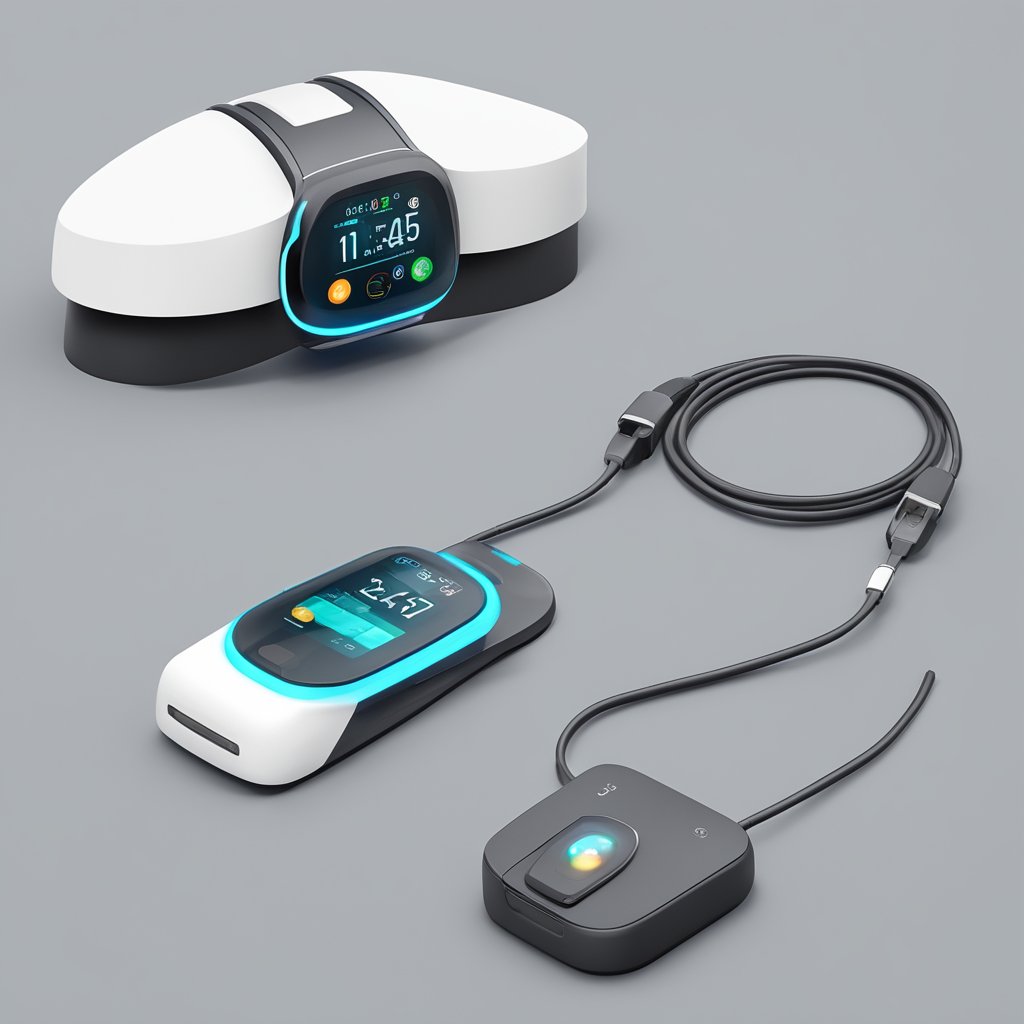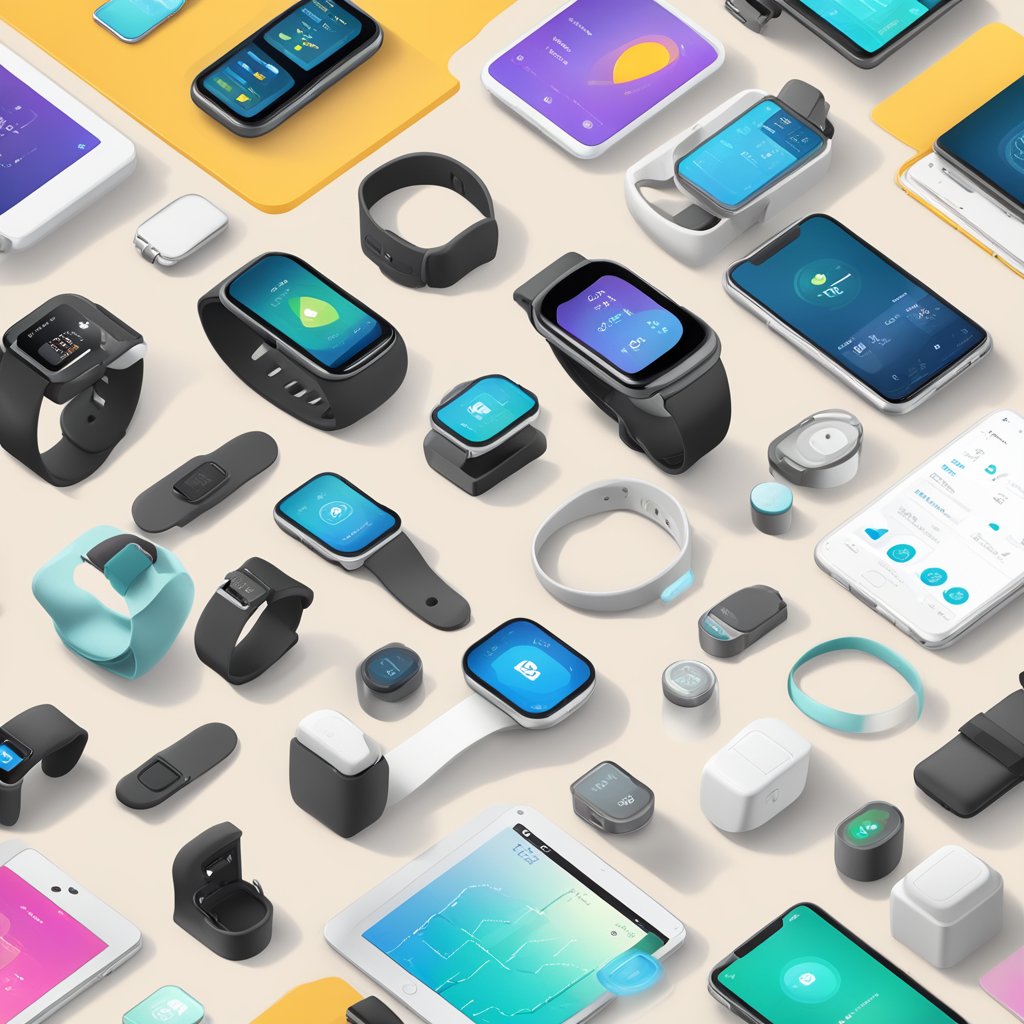Wearable medical devices have become an integral part of modern healthcare, providing users with the unprecedented ability to monitor their health metrics in real-time. These devices range from simple fitness trackers to sophisticated tools capable of tracking heart rate, blood pressure, and even blood glucose levels. The convenience of having personal health data readily available has empowered individuals to take an active role in managing their wellbeing.

The integration of wearable technology in patient care is also transforming the healthcare industry. For medical professionals, the data gathered by these wearables can lead to better-informed decisions and tailored treatment plans. For patients, it offers a level of engagement and personalization previously unattainable. This technology is not without its considerations, though, as users and providers must navigate challenges related to data accuracy, privacy, and device interoperability.
Key Takeaways
- Wearable medical devices enable real-time health monitoring and personal health management.
- The data from wearables assist healthcare professionals in refining patient care strategies.
- Users and providers must consider the implications of wearable technology in terms of data accuracy and privacy.
Overview of Wearable Medical Devices

In my examination of wearable medical devices, it’s evident that these devices have become integral to modern healthcare. They offer unprecedented monitoring capabilities, vital for managing chronic conditions and encouraging a healthy lifestyle.
Evolution of Wearable Technology
The trajectory of wearable technology started with basic pedometers and now has expanded to encompass a wide array of highly sophisticated electronic devices. I’ve observed their progression from simple fitness trackers to advanced health monitoring systems built into smartwatches and specialized garments. The integration of sensors has been critical in this evolution, enabling the collection and analysis of health-related data in real-time.
Types of Wearable Medical Devices
Wearable medical devices can be categorized by their functions and the health metrics they monitor. Here are two broad categories:
-
Fitness Trackers and Smartwatches: These wearables, which are commonly found on users’ wrists, are designed to track activity levels, heart rate, and sometimes even oxygen saturation and sleep patterns. They serve as an extension of the smartphone, providing notifications and tracking capabilities.
-
Dedicated Health Devices: This category includes devices like ECG monitors and blood pressure cuffs that are designed for specific health monitoring purposes. They often come with more specialized sensors and are used for medical diagnostics and chronic disease management.
Crucially, all these devices harness the power of sensors to monitor various health metrics and connect to other electronic devices, facilitating health management and data sharing with healthcare professionals. My analysis confirms the potential of wearable medical devices in improving patient outcomes through constant health monitoring and data analysis.
Key Health Metrics Tracked
Wearable medical devices have revolutionized how I monitor my health by providing real-time data on a range of vital health metrics.
Monitoring Heart and Respiratory Rates
Heart rate and respiratory rate are fundamental indicators of my cardiovascular and respiratory health. Wearable devices use biosensors to continuously measure these rates. My fitness tracker, for example, displays my heartbeats per minute while also keeping an eye on my breathing patterns.
Blood Pressure and Electrocardiogram Monitoring
For my blood pressure, wearables offer a convenient option to get systolic and diastolic measurements without the traditional cuff. Additionally, a built-in electrocardiogram (ECG or EKG) feature in some devices enables me to check for irregular heart rhythms, providing critical health data that I can share with my doctor.
Tracking Physical Activity and Sleep
My wearable device counts steps, records distances traveled, and calculates calories burnt to give insights into my activity levels. At night, sleep monitoring functions analyze my sleep duration and quality, helping me understand my rest patterns and contributing to a comprehensive view of my fitness.
Innovations in Blood Glucose and Body Temperature Monitoring
Cutting-edge wearable devices now offer non-invasive ways to measure blood glucose levels, which is a game changer for diabetes management. Similarly, continuous body temperature monitoring has become more accessible, allowing me to detect feverish trends that can be early indicators of illness.
Impact on Healthcare and Patient Management
In my experience, wearable medical devices have substantially transformed the landscape of healthcare by bolstering patient engagement and clinical outcomes. I’ve seen first-hand how these advancements have made treatments more personalized and efficient.
Improving Patient Engagement and Self-Monitoring
I understand that patients equipped with wearable medical devices tend to be more active participants in their health management. By regularly monitoring vital statistics, such as heart rate and glucose levels, I notice they make better lifestyle choices and adhere more closely to treatment plans. Self-monitoring empowers patients to:
- Recognize early symptoms of concern
- Adjust behaviors in real-time to maintain health
- Communicate effectively with healthcare providers
Enhancing Clinical Outcomes and Remote Patient Monitoring
Wearable medical devices contribute significantly to the enhancement of clinical outcomes. As a physician, I’ve observed that remote patient monitoring allows for continuous assessment of a patient’s condition, which is crucial for timely interventions. This technology aids in Treatment Optimization, as detailed below:
- Data Accuracy: Provides me with precise data to make informed decisions.
- Timely Adjustments: Enables swift alterations to treatment plans as needed.
- Reduction in Hospital Visits: Patients require fewer in-person check-ups, reducing the strain on healthcare facilities.
In my role, the ability to monitor a patient remotely ensures that I can provide treatment that is both proactive and reactive, tailored to the patient’s evolving health status. This aspect of wearable medical devices has redefined how I, and many colleagues, approach patient management.
Considerations for Users and Providers
When selecting and using wearable medical devices, users and providers must prioritize aspects like privacy and security, as well as consider practical features such as battery life and the device’s comfort and design.
Privacy and Security in Wearable Devices
Wearable health devices often handle sensitive personal health information, which necessitates robust security protocols to prevent unauthorized access. As a user, I should look for devices that offer data encryption and secure data storage options. Health data is subject to privacy regulations, which providers must adhere to. For example, compliance with standards like HIPAA in the United States ensures that the device’s data handling respects my privacy rights.
- Encryption: Look for devices that use end-to-end encryption for data transmission.
- Access Controls: Devices should offer customizable privacy settings that allow me to control who can view my data.
- Regulatory Compliance: Providers must ensure that devices comply with local privacy laws.
Battery Life, Comfort, and Design
Battery life significantly affects the practicality of wearable devices. A longer battery life means less frequent charging, which is convenient for me, especially if I rely on the device for continuous health monitoring. Comfort is another critical factor; the device should be lightweight and made of materials that won’t irritate my skin. The design must be user-friendly to encourage consistent use, which is vital for providers to receive continuous data.
- Battery Life: Evaluate the average battery life and charging requirements.
- Material: Ensure the device is made from hypoallergenic materials for comfortable daily wear.
- User-Friendly Design: The device should be easy to use and interpret, aiding both me and my healthcare providers in managing my personal health.
Technology and Industry Developments
In examining the recent strides within wearable medical devices, I focus particularly on the interplay of innovative sensors and artificial intelligence, as well as the dynamics between pioneering companies and overarching healthcare systems.
Advancements in Sensors and AI
The sensor technology in smart wearable devices has seen remarkable improvements. Companies are now incorporating biometric sensors capable of real-time health monitoring, ranging from heart rate to blood oxygen levels. For instance, I observe that latest models can even detect irregular heartbeats and episodes of atrial fibrillation with significant accuracy.
The incorporation of artificial intelligence (AI) stands out as a transformative force. AI algorithms process vast amounts of data collected by wearables, offering users actionable health insights. Crucially, IoT-enabled devices leverage AI to provide more personalized healthcare experiences and preemptive health recommendations.
The Role of Companies and Healthcare Systems
Companies in the digital health industry are actively collaborating with healthcare providers to integrate smart wearable devices into standard care practices. Through strategic partnerships, they’re not only enhancing device capabilities but also ensuring that these innovations seamlessly fit into existing healthcare frameworks.
Simultaneously, healthcare systems are increasingly adopting these devices, recognizing their potential to reduce healthcare costs and improve patient outcomes. By leveraging data from wearables, healthcare providers are adapting treatment plans in real time, significantly enriching patient care.
In summary, the escalation of sensor sophistication coupled with AI, and the symbiotic relationship between companies and healthcare systems, are propelling the digital health industry forward. These developments are reshaping how I monitor and manage my health in a connected world.
Frequently Asked Questions
In this section, I will address common queries related to wearable medical devices, ranging from top features and industry leaders to integration and future expectations.
What features distinguish the best health monitoring wearable devices?
The best health monitoring wearables offer accurate biometric tracking, long battery life, user-friendly interfaces, and seamless data synchronization with healthcare systems. They also adhere strictly to data privacy regulations.
Which companies are leading the market in wearable medical technology?
Companies like Apple, Fitbit, Garmin, and Philips are at the forefront of wearable medical technology. They have established a strong reputation for innovation, reliability, and user engagement in their products.
How can wearable devices be integrated into continuous health monitoring?
Wearable devices can be integrated into continuous health monitoring through real-time data transmission to healthcare providers, integration with electronic health records, and the use of AI to analyze and predict health events.
What are the emerging trends in the wearable medical devices industry?
Currently, trends include the development of non-invasive glucose monitors, devices with multi-parameter tracking, the use of AI for personalized insights, and an increased focus on mental health monitoring.
In what ways is wearable technology expected to evolve within healthcare?
I expect wearable technology in healthcare to advance towards more discrete and powerful devices, better patient engagement, wider adoption in remote patient monitoring, and closer collaboration with medical professionals.
Can you provide a list of wearable devices that are frequently used for health monitoring?
Yes, popular devices often used for health monitoring include the Apple Watch, Fitbit trackers, Garmin’s fitness watches, the Oura Ring, and continuous glucose monitors like the Dexcom G6.